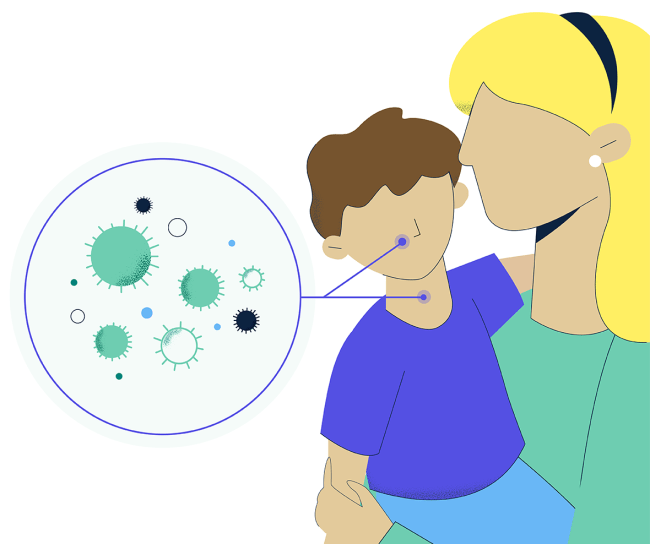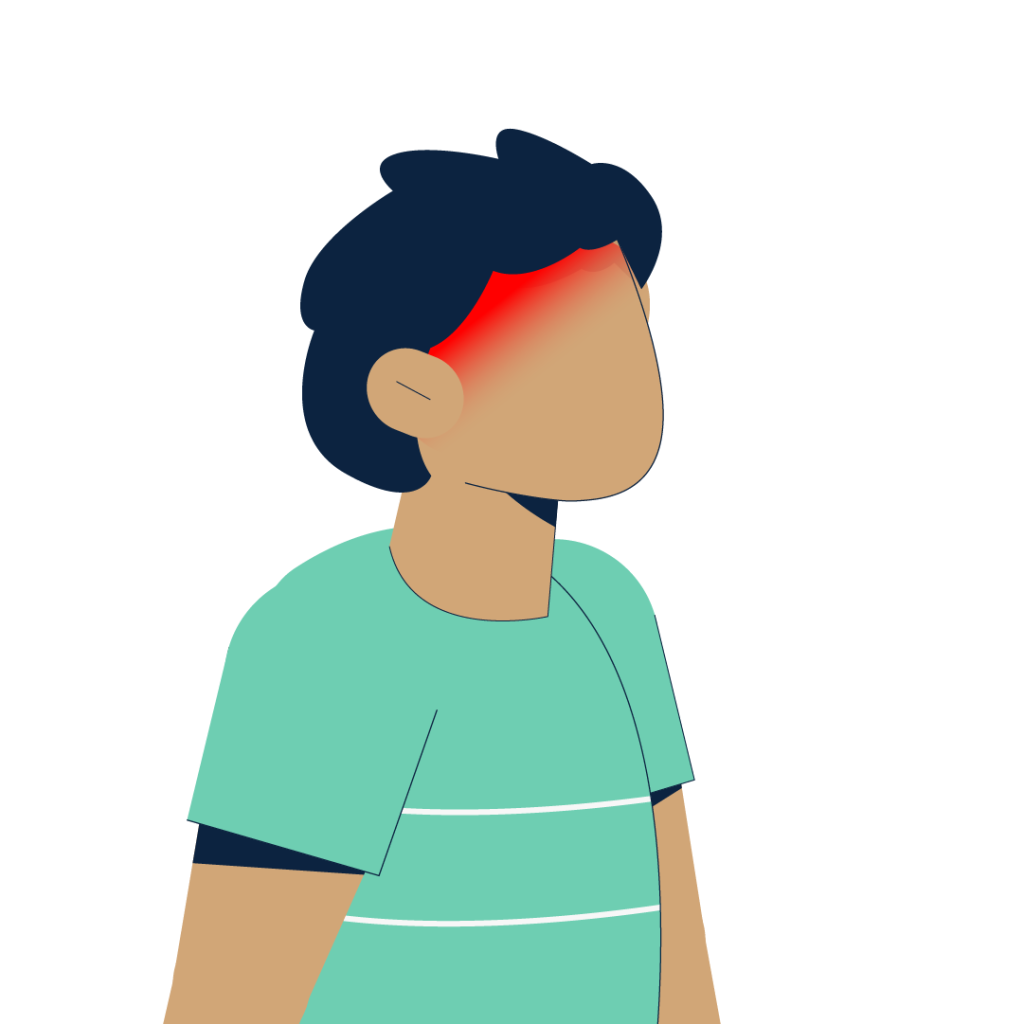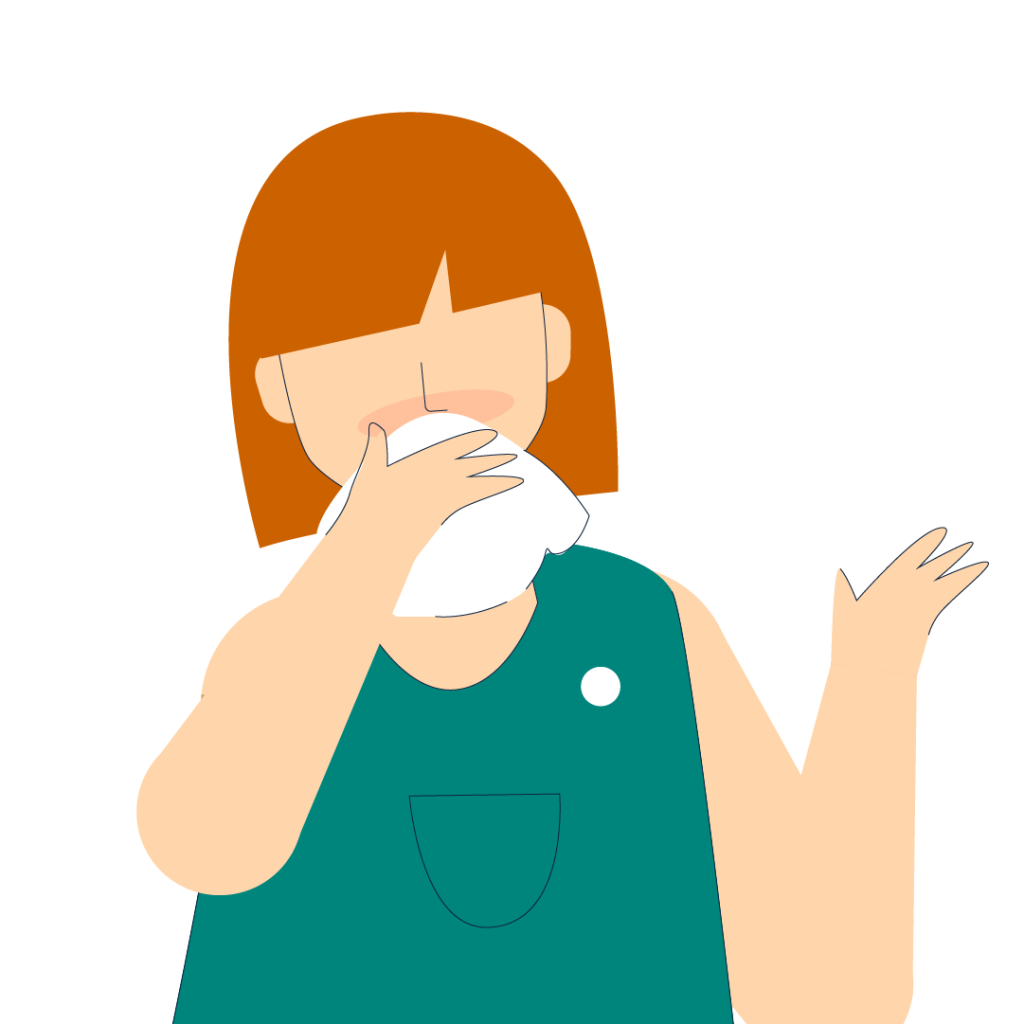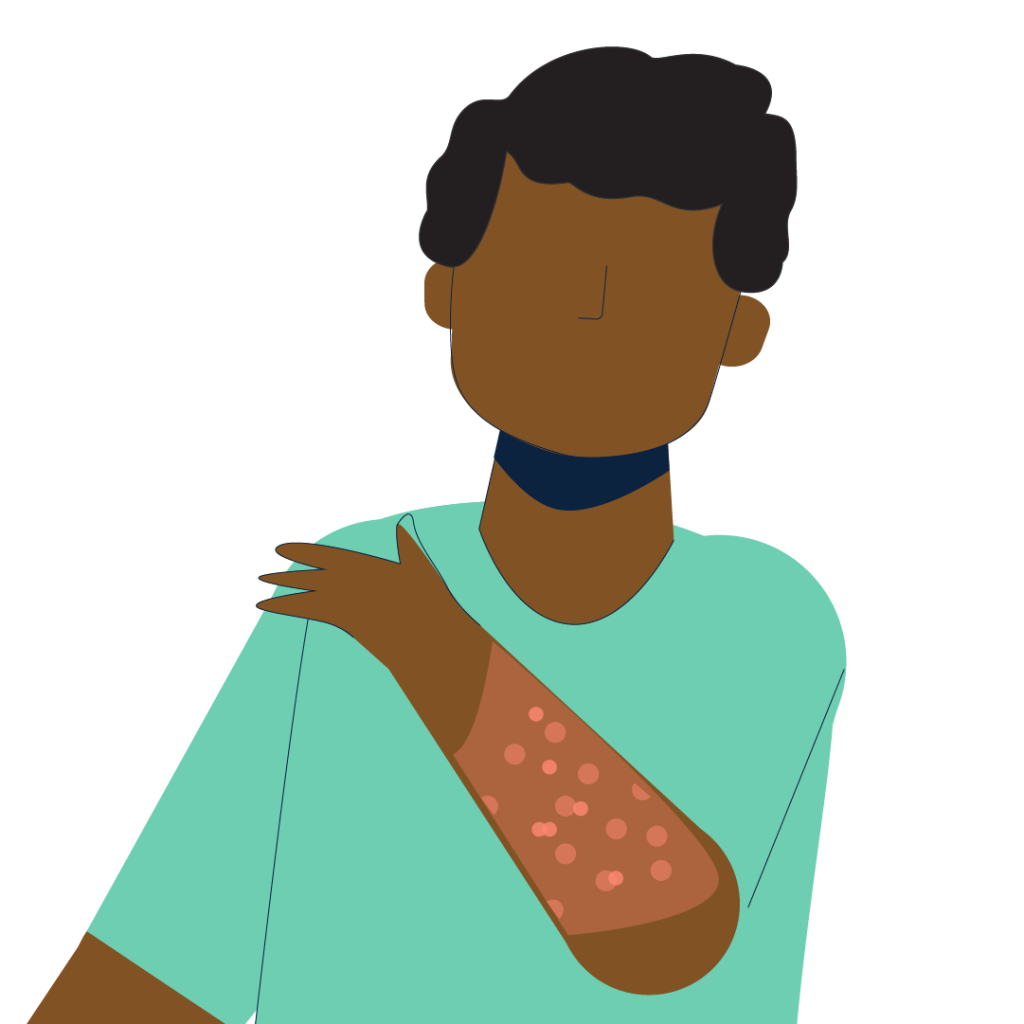Measles: signs and symptoms
Learn more about what the measles virus is and how measles spreads
March 13, 2025


What is measles?
Measles is a highly contagious viral disease that can affect people of all ages but is most common in children. The virus lives in the mucus of the nose and throat of an infected person.
Measles spreads through the air when an infected person coughs or sneezes. Symptoms appear 7 to 14 days after contact with the virus.
Common measles symptoms include:

High fever
(may spike to more than 104°F)

Cough

Runny nose

Red, watery eyes
(7-14 days after contact with the virus)

Spots in mouth
(2-3 days after symptoms begin)

Rash
(3-5 days after symptoms begin)
How measles spreads
Measles can be serious and lead to complications
- About 1 in 5 unvaccinated people in the U.S. who get measles are hospitalized.
- As many as 1 out of every 20 children with measles get pneumonia, the most common cause of death from measles in young children.
- Approximately 1 to 3 of every 1,000 children who become infected with measles will die from respiratory and neurologic complications.
Understanding measles outbreaks
Before the vaccine became available in 1963, an estimated 3 to 4 million Americans contracted measles each year; an estimated 48,000 people in the U.S. were hospitalized and there were approximately 400 to 500 deaths annually.
When you’re contagious with measles, up to 90% of the people around you who are not vaccinated will also become infected.
In the U.S., measles cases can originate from international travel as the disease remains common in many parts of the world. Typically, 2 out of 3 of travelers with measles are unvaccinated Americans re-entering the country.
As seen by the recent outbreaks across the country, measles can spread rapidly, and infected individuals can spread measles to other people who are not immune.

